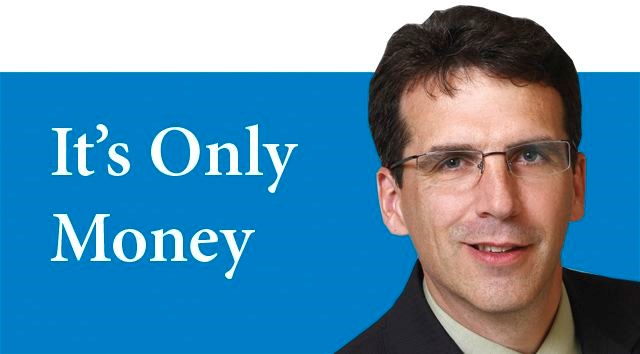Because my dad worked for a restaurant chain, we ate a lot of expired food when I was a boy. (It wasn't so bad).
He would bring home loaves of day-old bread, and the occasional plate of pastries from "the commissary," a head-office centralized food warehouse owned by the chain. We drank powdered milk, (which was disgusting), rarely afforded apple juice, and only occasionally indulged in cheese, other than canned cheese spread (also nasty).
But in the late '60's, one treat was affordable to most families: bacon. Crunchy, salty, fatty and inexpensive, it was one of the first delicacies I learned to make on my own. It was abundantly cheap then. My mom even used to fry the slices in to our pancakes.
In the early '70's that all ended. The price of bacon more than doubled between 1971 and 1975, and suddenly the poor man's treat was a middle-class delicacy. I don't know what trade war or who's pig farms went sideways, but I have not had a steady diet of bacon ever since.
Tracking prices has been variously compared to a random walk by a drunken man, or to the flight of a baby butterfly. Be it for stock prices, bond yields or the bacon-ability of the average Joe, markets are unpredictable by nature, but values trend upwards, generally.
In the otherwise drudgeryingly boring and predictable world of bonds, for the first time in eight years, we can find bond yields of a similar risk, out-yielding GIC's in the three- to six-year range. Although this news won't likely make anyone's sandwich less salty, it's actually pretty newsworthy. I've been quoting GIC rates to my more conservative clients for nearly a decade, and have often scoured bond markets for a better deal to no avail. But today it actually works in a few cases.
I have a few other clients who, for the past number of years, have been expecting a return to higher interest rates. Now that the market (and central banks) have begun to nudge rates upward, they might be hopeful for significantly more. But when the dust settles, longer-term structural forces such as aging populations and highly indebted economies will likely prevent yields from straying much from the range that has been in place for several years.
Let's start with Trump. Assume that, unlike his healthcare initiatives, he succeeds in getting Congress to enact his proposed tax cuts, deregulatory measures and fiscal spending. Their passage would result in expectations of stronger economic growth and higher inflation, and, coupled with a smattering of trade protectionism, likely lead to higher bond yields. But two other possibilities exist: one is that Trump fails to sell legislators and the public on these policies. The other possibility is, of course, that Trump's tenure will be cut short, for whatever reason. In both cases, bond yields would likely fall.
The next task facing Trump is the possible appointment of a new Fed chairperson, and the selection of as many as four of the remaining 11 members of the Federal Open Market Committee (FOMC). Investors are uncertain at this point whether the continuity that has characterized the Fed since the financial crisis will persist. Yellen's four-year term as head of the FOMC expires in February, and three slots are empty following the April resignation of Governor Tarullo. It is almost certain, therefore, that the FOMC will have a very different composition by this time next year. A lack of obvious FOMC candidates and the absence of a clear frontrunner for chairman may create short-term volatility.
One risk of a reformulated FOMC is that the panel proceeds to reduce the Fed's balance sheet in a way that upsets financial markets. The prevailing view is that the Fed must move slowly in paring its US$4.5 trillion balance sheet to avoid rattling markets.
But just because the Fed is talking about reducing its balance sheet, doesn't mean that it actually wants to do too much, or even needs to. After the 2008 banking crisis, global policymakers introduced regulations that, in effect, require banks to keep more money on deposit at the Fed, and those deposits are among the very assets swelling the Fed's balance sheet. That liquidity, as well as the natural growth of money in circulation, mean that the Fed's massive balance might even be a semi-permanent feature of the financial system. I believe that a partial reduction in the Fed's balance sheet is manageable, and that the Fed should and will move cautiously.
To review, our forecast is for periodic spikes in bond yields over the next 12 months, presenting opportunities for investors to add bonds at more attractive rates, but market and political forces will still hold that in check for a long time. As for the price of bacon, that's still a mystery to me.
Mark Ryan is an investment advisor with RBC Dominion Securities Inc. (Member-Canadian Investor Protection Fund).



